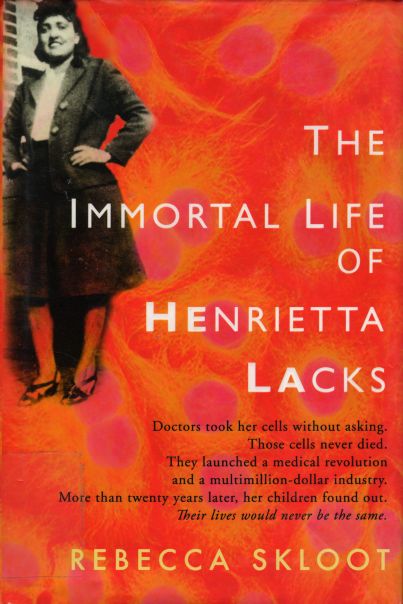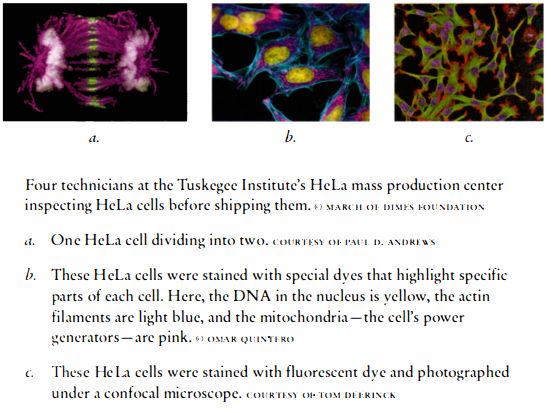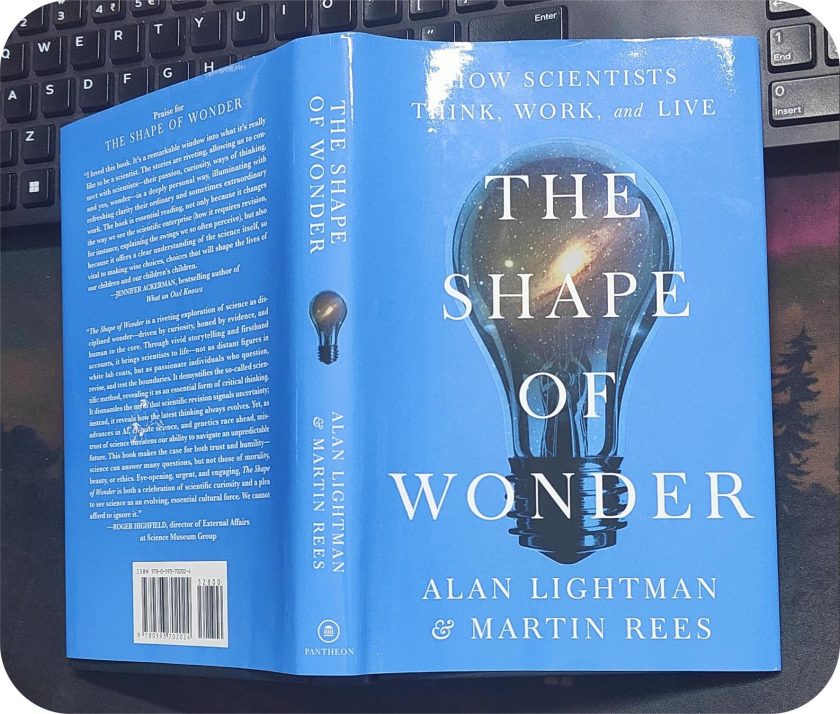
The Immortal Life of Henrietta Lacks is a beautiful book written by Rebecca Skloot in 2010. It is about a poor African American woman who came down with a rare cervical cancer in 1950s.
After giving birth to her fourth child, Henrietta grew suspicious of a lump in her cervix. To clarify things, she went straight to Johns Hopkins Hospital. The doctor took a biopsy by extracting sample cells for examination.
Although she couldn’t survive, after a few sessions of x-ray therapy and radium treatment. She died at the age of 31. However, interestingly her cells continue to multiply in lab, and consequently, they were further harvested and used to create an “immortal cell line” for scientific research purposes. The Lacks family was not aware of the entire process of research.
Rebecca Skloot, the author, decides to spread the word since Henrietta’s story had a profound impact on her. This book is, therefore, the result of her consistent effort in that direction.
Rebecca spent the subsequent decade of her life working with the Lacks family in uncovering the source of HeLa cells. Not to miss, the process of research and discovery led her to re-examine her own understanding of race, faith, science, and ethics.
The HeLa cells
HeLa cell is the “immortal cell line” obtained from the biopsy of Henrietta Lacks. The designation HeLa is derived from her name itself. It is called immortal as it can be easily grown in a laboratory setting.
“Henrietta’s cells have now been living outside her body far longer than they ever lived inside it. If we went to almost any cell culture lab in the world and opened its freezers, he told us, we’d probably find millions – if not billions – of Henrietta’s cells in small vials on ice.” (p4.)
The cells have been used to study a wide range of biological processes, from cancer biology and virology to genetics and drug development.
Their chromosomes and proteins have been studied with such detail and precision that scientists know their every quirk. Like guinea pigs and mice, Henrietta’s cells have become the standard laboratory workhorse.

Anti‐Black racism
As mentioned before, the Lacks family knew nothing about the research that was being done on HeLa cells. This throws light on the socio-economic milieu of the times. It was, most predominantly, divided on the grounds of racism.
“The public wards at Hopkins were filled with patients, most of them black and unable to pay their medical bills. David drove Henrietta nearly twenty miles to get there, not because they preferred it, but because it was the only major hospital for miles that treated black patients. This was the era of Jim Crow -when black people showed up at white-only hospitals, the staff was likely to send them away, even if it meant they might die in the parking lot. Even Hopkins, which did treat black patients, segregated them in colored wards, and had colored-only fountains.” (p15.)
According to Skloot, the healthcare system had always gravitated towards the race of fair color. Hence, doctors and the labs clearly took advantage of Henrietta race. And this was a common theme, after all, black woman saved millions of Americans.
“Black scientists and technicians, many of them women, used cells from a black woman to help save the lives of millions of Americans, most of them white. And they did so on the same campus-and at the very same time-that state officials were conducting the infamous Tuskegee syphilis studies.” (p97.)
Research fraternity progressed and of course profited but the sad part remained the same. None of the black population received any reimbursement or recognition.
America’s dark history of research
The poor remained marginalised while the otherwise rich made consistent profits. Poverty and illiteracy went hand in hand. In her early years, Henrietta couldn’t finish school. The responsibility of garden and livestock went over her shoulders.
In her later years, she developed symptoms of some serious diseases but didn’t realise that situation could go worse. She cancelled appointments for syphilis and gonorrhea treatments.
“She knew about harvesting tobacco and butchering a pig, but she’d never heard the words cervix or biopsy. She didn’t read or write much, and she hadn’t studied science in school. She, like most black patients, only went to Hopkins when she thought she had no choice.” (p16.)
Her poverty resulted into illiteracy became the parameters for doctors and medical assistances who took advantage of these two factors for their benefit.
“Like many doctors of his era, TeLinde often used patients from the public wards for research, usually without their knowledge. Many scientists believed that since patients were treated for free in the public wards, it was fair to use them as research subjects as a form of payment. And as Howard Jones once wrote, “Hopkins, with its large indigent black population, had no dearth of clinical material.” (p30.)
Dehumanized and devalued Black lives
Morality and ethics played no role when the patient is of color. The situation echoes the Nazi human experimentation during World War II and the Holocaust. Likewise, no consent was taken from the forced prisoners to conduct medical procedures a.k.a. medical torture.
In this book, Skloot points out how African Americans were treated poorly, rather, inhumanly.
“They recruited hundreds of African-American men with syphilis, then watched them die slow, painful, and preventable deaths, even after they realized penicillin could cure them….The researchers chose black subjects because they, like many whites at the time, believed black people were “a notoriously syphilis soaked race.” (p50.)

Takeaway
Henrietta’s cells are still alive today. So, what could be the reason?
As per the book, telomerase is the reason behind the mechanics of HeLa’s immortality. The enzyme (telomerase) is able to rebuild the telomere which is a string of DNA found at the end of each of Henrietta’s chromosome.
“Telomerase constantly rewound the ticking clock at the end of Henrietta’s chromosomes so they never grew old and never died.” (p217.)
Due to this understanding, we now know that the cause of the proliferation capability of these cells is related to an active version of the telomerase.
During the regular cell divisions, progressively telomere shortening occurs with aging and eventual cell death. Since, each cell replication, corresponds to shorter and shorter telomeres until they’re so short that cells can no longer divide.
In her case, the hyperactive telomerase prevented the incremental shortening of the chromosome telomeres, hence, the “rewinding of the ticking clock”.
The Immortal life of Henrietta Lacks touches upon some sensitive topics like bioethics, racism, discrimination, illiteracy, disabilities, access to healthcare and poverty, which is deeply embedded in our society across geographical locations.
It also highlights the harsh realities that happened behind the closed doors of medical facilities in the first world country. Prejudices, however, against poor people is ubiquitous phenomenon seen across globe.
This is quite a profound story and it has deeply affected me, I’d like to thank Rebecca Skloot for the extensive research in surfacing the world the true identity of HeLa cells. And the most important woman in Medicine’s history- Henrietta Lacks.
If you want to experience the human side of scientific developments then this book is a must-read.



